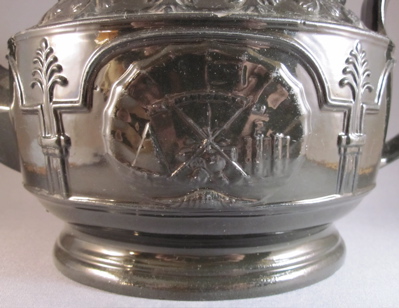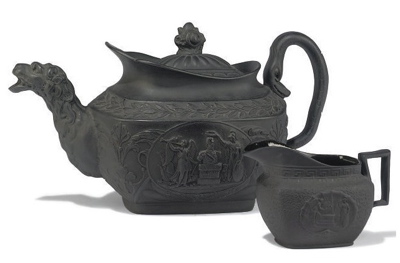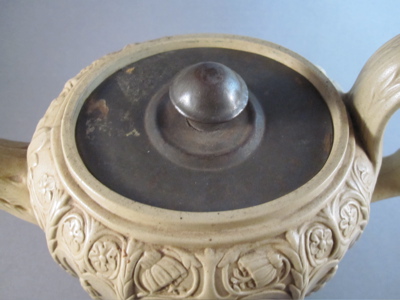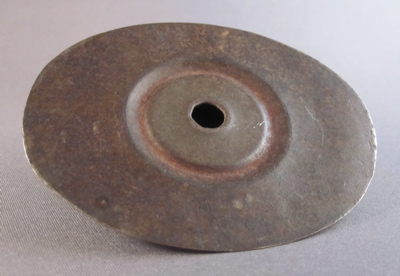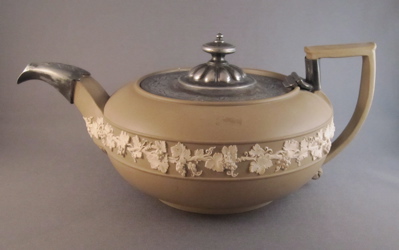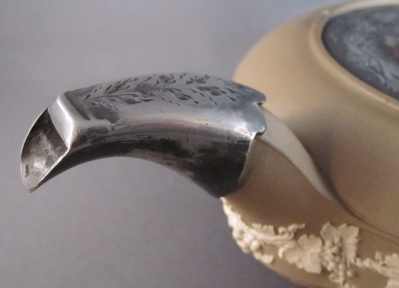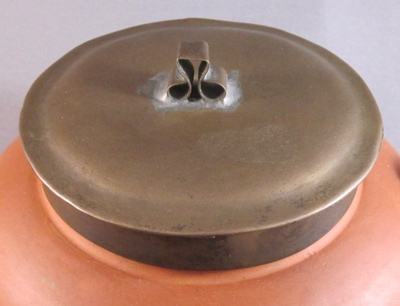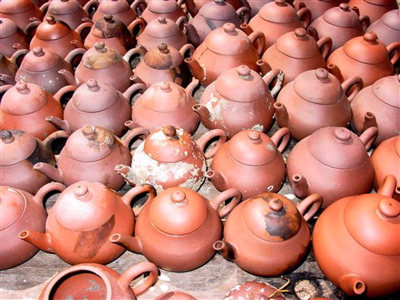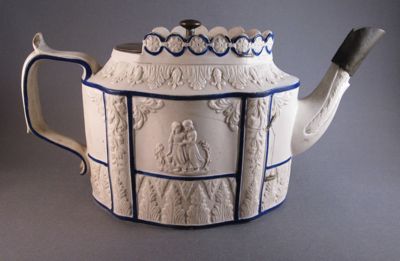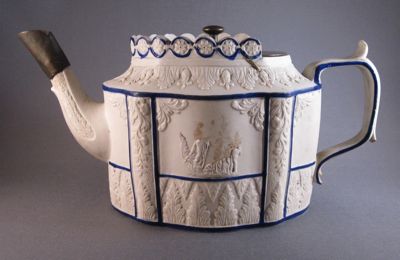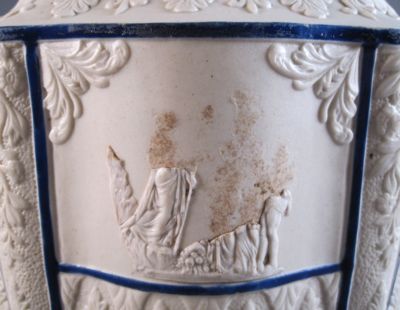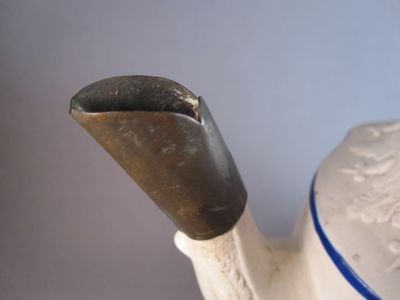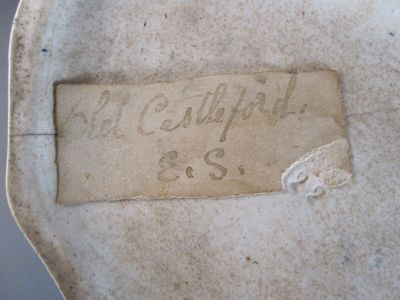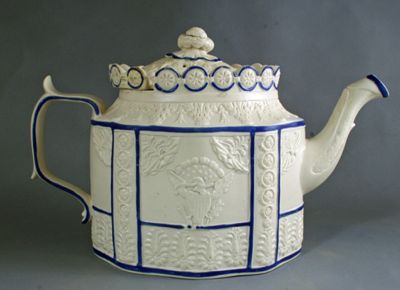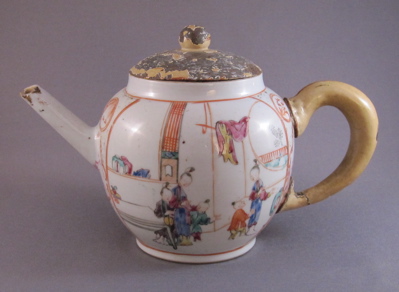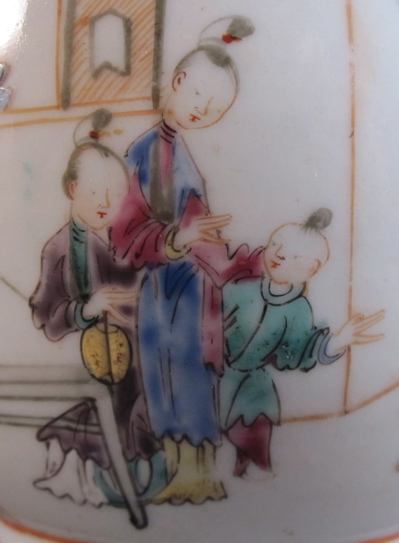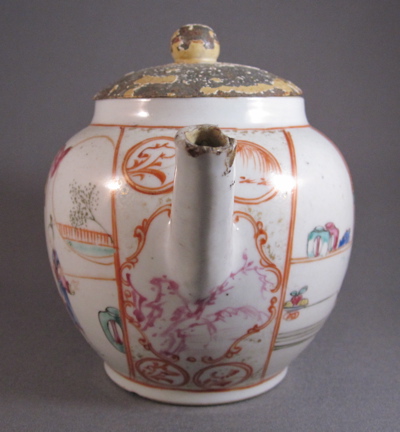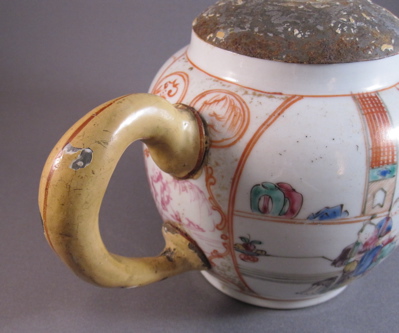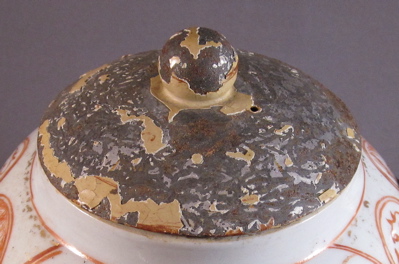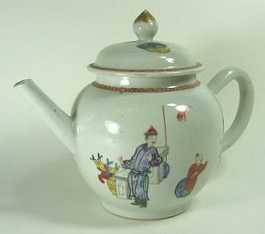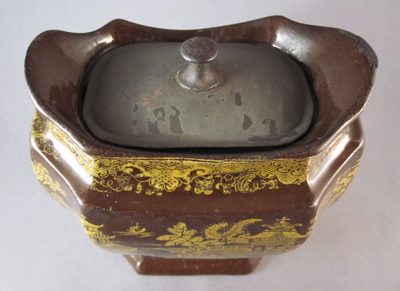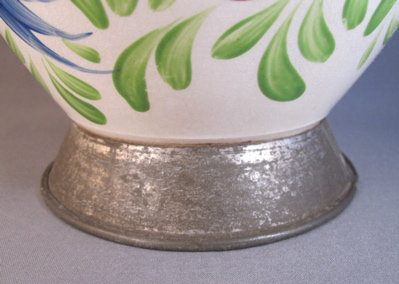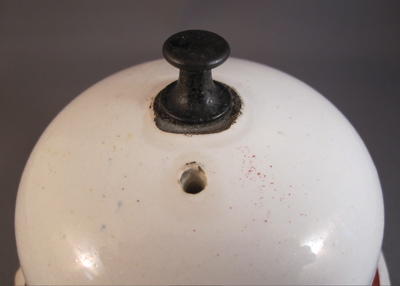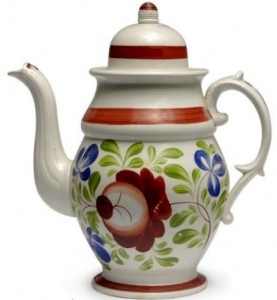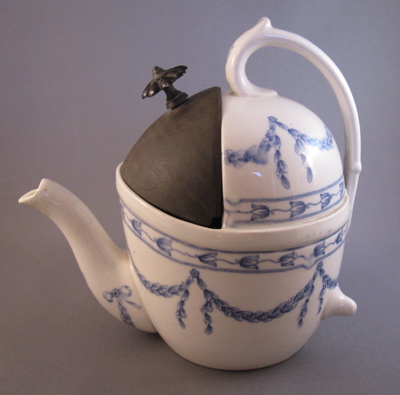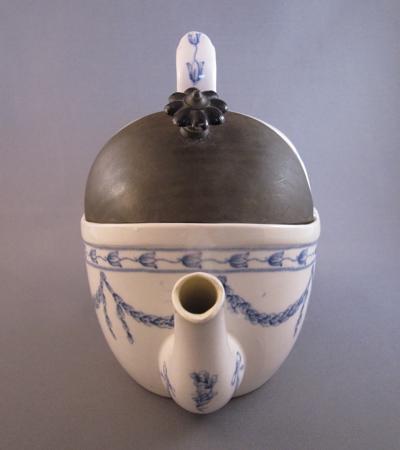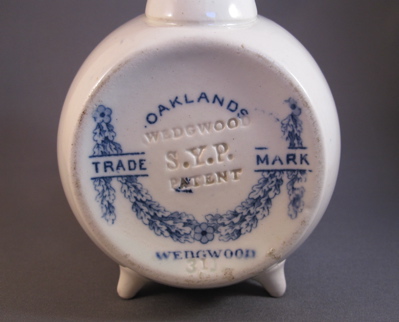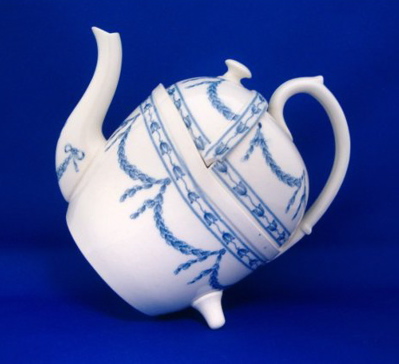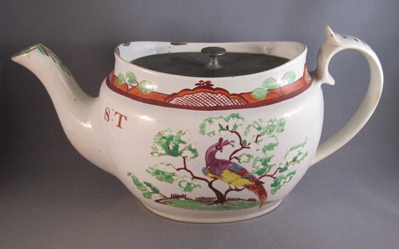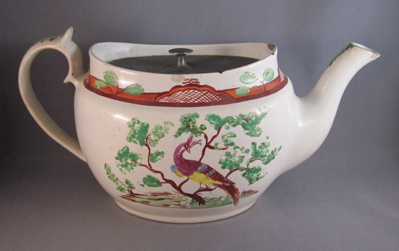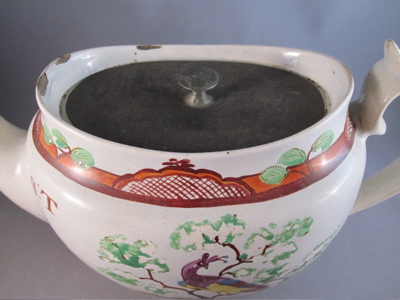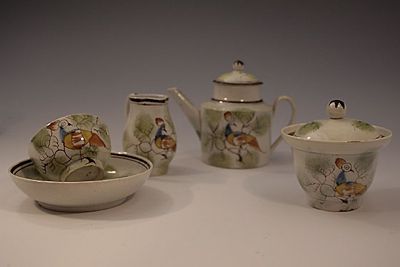A black pottery teapot with relief decoration, made in England to commemorate Vice Admiral Horatio Nelson, who died in 1805 at the Battle of Trafalgar. Nelson become one of Britain’s greatest war heroes and many monuments in England have been erected in his memory
One side has a moulded relief vignette of a crocodile, a pyramid and a fort with military devices, surmounted by a banner titled “TRAFALGAR”, surrounded by classical acanthus leaves
Teapot measures 4-3/4″ high and is 10″ long
The reverse side shows a monument with the figures of Britannia and Victory holding a shield inscribed “NELSON”
Remains of black enamel are seen on the side of the replaced tin spout. It was quite common for teapot spouts to break or chip and I have dozens of examples of this type of repair in my collection. I have even seen silver mounts on intact spouts that would have been attached at the time of purchase for proactive protection
A well executed tin lid with turned pewter knob replaced the lost or broken lid. The large chipped scalloped edge remains unrepaired and was most likely damaged after the other repairs were done
This is another, more elaborate example of a black basalt teapot made to honor Admiral Nelson with similar decoration
Photo courtesy of Christie’s

